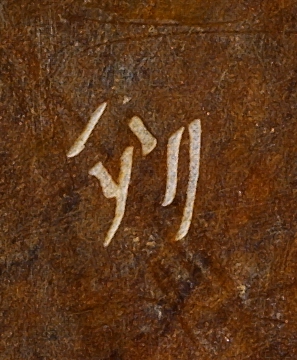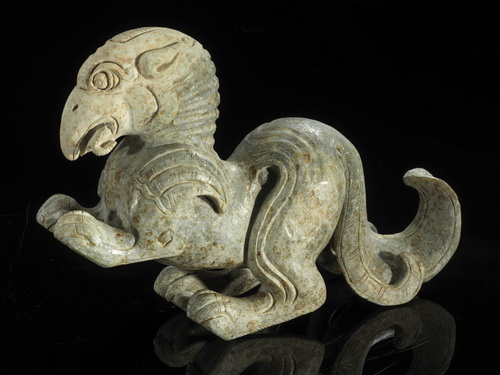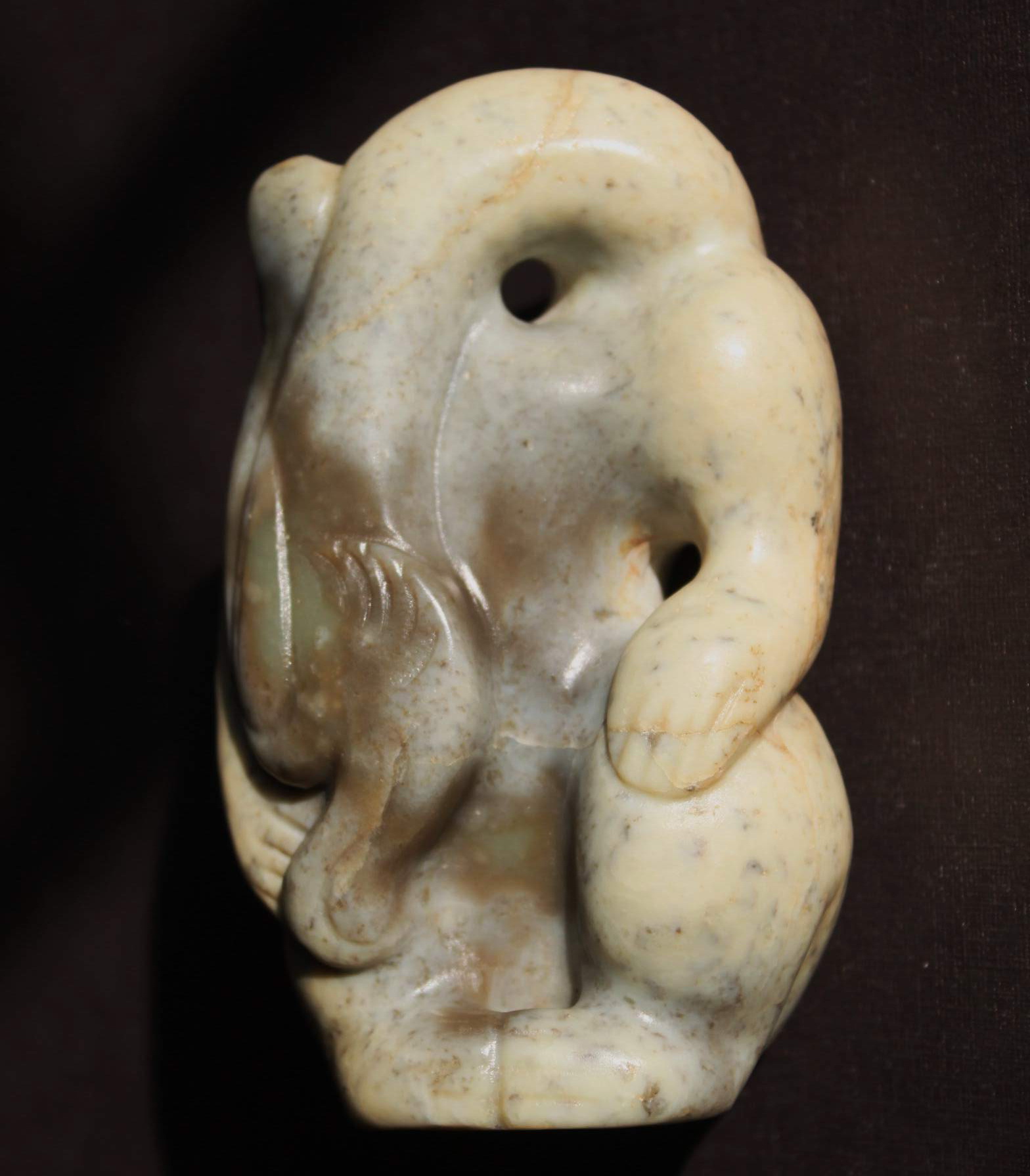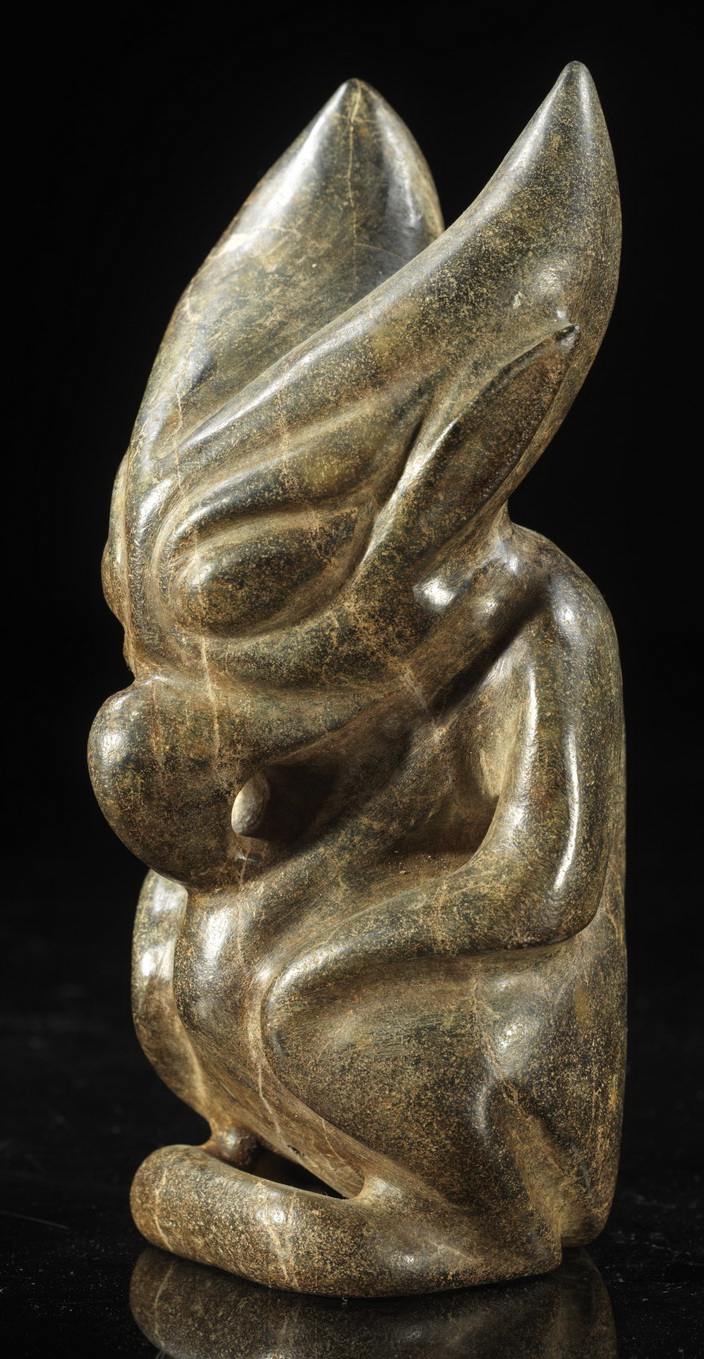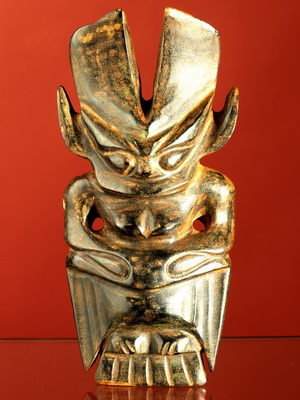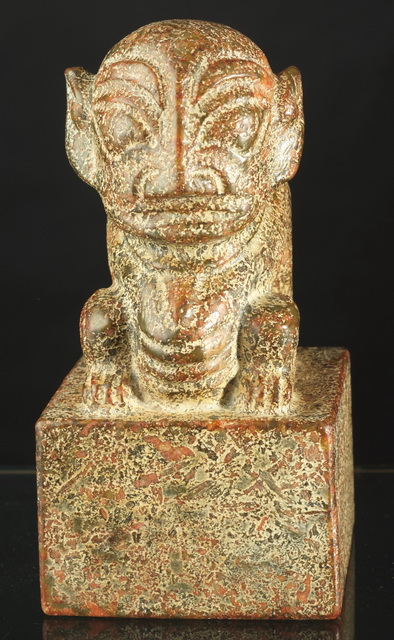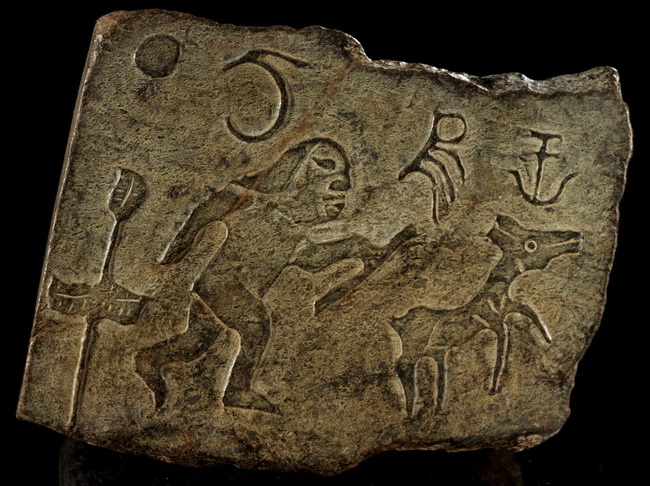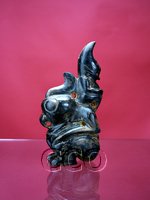Historical Discoveries
Origins of Chinese Scripts
Ancestry & Environments
List of Disocveries
List of Discoveries :
During our investigations, we have reviewed
extensively the
archeological
publications,
and related Chinese classics. A number of
unknowns
and
mysteries
raised in those
documents could
now be
resolved by revealing the pattern of development in
the collected
Neolithic jade sculptures.
1.
Revelations
of the "Origins of Human" as recorded by early Neolithic jade sculptures
2. Neolithic jade
sculptures with character scripts on them
2-1.
Beginnings of
the Chinese scripts
Carved scripts were found at the bottom of the figure
statue sculptures from XiangJiang & GangSu.
The picture of figures were carved
firstly to represent the leadership figures, then similar scripts
were carved in place of the carved
picture to simplify the image representation.
In the eastern Yi culture of the TaiWu (太湖)
Culture, engraved simple stroke were invented to represent
objects, figures and conceptual meanings in the
JiangSu region.
2-2.
Development of Chinese Character
Scripts by Geographical Regions
3. Origins of the
Hongshan
Culture
3-1. Judging from the art forms of the early jade sculptures from the XiangJiang
and Gangsu
areas might have by the regions of the Hongshan
Cultural areas of Inner Mongolia and Liaoning.
The HongShan jade sculptures in the public
record tend to be symbolic from the excavated burial
sites.
3-2. For example, the "horse-shoe shaped" burial jade from the Hongshan
Culture can now be traceable
from its original form carved human
head from the XiangJiang Neolithic "head of a human" figure.
3-3. Jade sculptures with carved pictures and scripts from the XiangJiang, Gangsu
regions, might provide
evidence that the "Hongshan" burial jades might have been
later imitations of the earlier cultural jade
sculptures of their earlier ancestors
residing in XiangJiang and GangSu.
4. Origins of
the Liangchu Culture
Similarly, the Liangchu jades identified at
ZheJiang
bear signs of developing from the Eastern Yi
culture in the TaiWu (太湖) Culture region of
KiangSu.
From the sculptures in the XiangJiang, GangSu
cultural
regions, the jade sculptures demonstrated that human
was evolved from dinosaur, dinosaur bird,
and birdman. Bird had
been the symbol of ancestry for the
Eastern clan . In the Northern
cultural jade, we were able to identify the totem consisting of the bird's head
with two eyes, nose. This totem was later
incorporated into the early form of the Liangchu totem, known as
the "Godly Face and Beastly
Body" in the TaiWu Culture.
It was later further developed into
the feathered godly/beastly
figure commonly known as the totem symbol
of the Liangchu culture of ZheJiang in
academic journals and in Museum catalogues.
5. The
Eastern Yi Culture
in the TaiWu Culture began the invention of the scripts by introducing simple
strokes
as names as well as symbols of objects. More general
applications of scripts to describe nature and
abstract ideas were found on the jade sculptures of Eastern Yi
clan in JiangSu.
6. Traces of Neolithic legendary historical figures
6-1. The origin of character script, Lau (Liu, in Mandarin) (劉), and the FuSuiXi (斧燧氏) are now traceable
by scripts on jade sculptures from the
TaiWu Culture.
6-2. The names in
scripts of the Three Emperors of FuSuiXi
(斧燧氏), TaHoe (太昊), and TaYan
(太炎) are
now also traceable by jade scripts
from TaiWu jade sculptures.
6-3. The CanJie (蒼頡) scripts can be identified at the bottom of some of the
Neolithic jade art works from
the Central Plains.
6-4. The Central Plains culture of the
era of CanJie (蒼頡) can be identified by the art
forms of scripts and the
jade vessels.
6-5. Massive Central Plains jade zongs and vessels
(up to 1.4meters high) of varies art forms are inspirational
with
character scripts beautifully carved on them.


